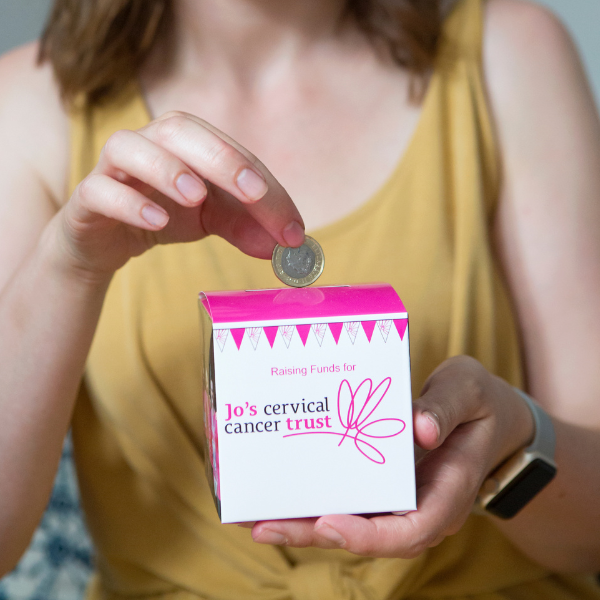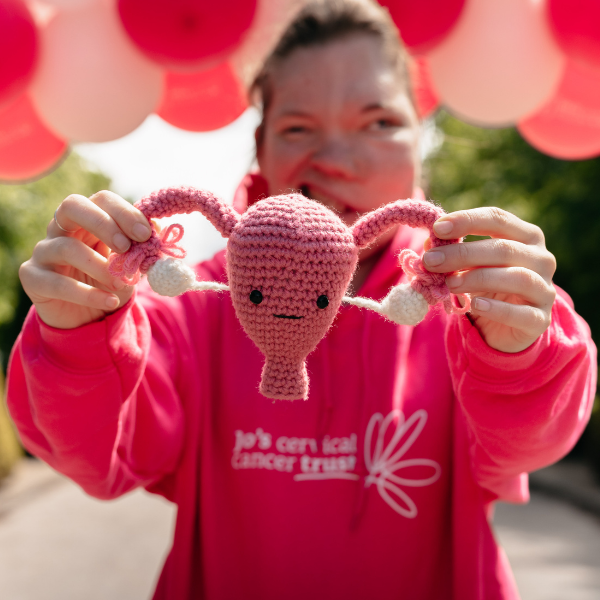Cervical ectropion (cervical erosion)
Last modified: 2 June 2025, 12:37
- Casey PM et al., Abnormal Cervical Appearance: What to Do, When to Worry?, Mayo Clinic Proceedings, 2011.
- Hua X et al., Using platelet‐rich plasma for the treatment of symptomatic cervical ectopy, International Journal of Gynecology and Obstetrics, 2012.
- Çekmez Y et al., Is Cryotherapy Friend or Foe for Symptomatic Cervical Ectopy?, Medical Principles and Practice, 2016.
Cervical ectropion is when cells from inside the cervix grow onto the outside of the cervix.
On this page:
Key facts about cervical ectropion
- It is common.
- It is not linked to cervical cancer.
- It often goes away on its own.
- It may not cause any symptoms.
- It can be treated if it is causing symptoms, such as light bleeding during or after sex.
What is cervical ectropion?
Cervical ectropion is said as ek-tro-pee-un. It is common and harmless. It is not linked to cervical cancer or anything that causes cancer.
Cervical ectropion happens when cells from inside the cervical canal grow onto the outside of the cervix. These cells are called glandular cells. Glandular cells are red, so the area may look red.
Cervical ectropion is sometimes called cervical erosion or cervical ectopy.
The cervix
How do you develop cervical ectropion?
A lot of women and people with a cervix are born with cervical ectropion. It can be caused by hormonal changes. This means you are more likely to have cervical ectropion if you are:
- younger
- going through puberty
- pregnant
- taking the combined contraceptive pill.
Symptoms of cervical ectropion
Most of the time, cervical ectropion does not cause any symptoms. It usually goes away without treatment.
Sometimes, glandular cells can:
- bleed more easily
- make more mucus.
This means cervical ectropion may cause:
- light bleeding (spotting), discharge, or pain during or after sex
- light bleeding or pain during or after cervical screening
- light bleeding in between regular periods
- light bleeding after some exercise, such as running or horse riding
- lots of discharge (fluid) without an infection.
It is important to get symptoms checked out by your GP or practice nurse, including any we don’t mention on this page.
Diagnosing cervical ectropion
In many cases, cervical ectropion is never diagnosed because it doesn’t cause any symptoms.
Cervical ectropion may be diagnosed if:
- you visit your GP surgery with symptoms and they look at your cervix
- it is seen during a standard gynaecological examination or test, such as cervical screening.
Your GP or practice nurse should talk to you about any symptoms and the impact on your life. They can then suggest ways to manage or treat it:
- If it is not causing any symptoms or impact, you do not need management or treatment.
- If it is causing symptoms and you take a contraceptive pill, they may suggest switching to a different type of contraception to help manage it.
- If it is causing symptoms and having an impact, they may refer you for treatment.
Treating cervical ectropion
If you choose to have treatment, it will usually be in a hospital department called colposcopy. Sometimes treatment may be offered in your GP surgery. A doctor or nurse will take a closer look at your cervix and the cervical ectropion.
You will usually be asked to avoid treatment when you are:
- pregnant
- having a regular period.
Before treatment
Your doctor or nurse should explain any treatment before you have it.
You will be asked to lie on an examination bed. Your legs will be bent up and supported.
The doctor or nurse will use a speculum. This is a plastic tube that gently opens your vagina so they can see your cervix. The speculum may feel uncomfortable, but shouldn’t be painful. Here are our tips if you feel worried about the speculum:
- Speak to the doctor or nurse so they can support you.
- Ask to see and hold it before the treatment starts.
- Ask for a smaller size.
- Ask to insert it yourself.
Cold coagulation or diathermy uses heat to burn away the glandular cells on the outside of the cervix.
It is done under local anaesthetic. This means the area being treated is numb, but you are awake. The treatment takes about 5 to 10 minutes.
Diathermy uses a small, thin stick with a ball on top of it. The ball is heated with an electric current. The doctor or nurse will place the ball against your cervix to remove the cells.
Diathermy should not be painful. You may feel a cramping or ache, like a period pain, while it is being done.
Cryotherapy freezes off the glandular cells on the outside of the cervix.
You do not usually need a local anaesthetic. The treatment takes about 10 minutes.
Cryotherapy uses liquid nitrogen, which is very cold. This is usually put on with a small, thin metal stick.
Cryotherapy should not be painful. While it is being done, you may feel:
- a cramping or ache, like a period pain
- a warmth through your body, which should stop once the treatment is done.
Silver nitrate is sometimes used to remove the glandular cells. You will not usually need a local anaesthetic. The doctor will put it on your cervix with a small, thin stick.
Silver nitrate should not be painful. It may feel warm or cold for a short time where the treatment is put on your cervix.
After treatment for cervical ectropion
You should be able to go home about 15 minutes after treatment, if you are feeling well enough. You can drive or take public transport.
Side effects after treatment for cervical ectropion
It usually takes about 4 weeks to heal after treatment for cervical ectropion. You may have some side effects during this time, including:
- a cramping pain or ache, like being on a period, for up to 2 days.
- light bleeding
- watery discharge.
You will need to avoid some things for up to 4 weeks after treatment:
- Do not use tampons.
- Do not have penetrative sex.
When to speak to your GP or doctor
It is not common to have side effects that last for a long time after cervical ectropion treatment. It is important to speak with your GP or doctor if you:
- are in a lot of pain that does not go away after using over-the-counter painkillers
- have heavy bleeding – for example, soaking through a period pad every hour
- have vaginal discharge that smells bad
- feel unwell or have a high temperature (fever).
Cervical ectropion FAQs
Ectropion is when something that was inside ‘turns’ or becomes present on the outside. In the case of cervical ectropion, cells that are usually on the inside of the cervix are on the outside.
Treatment for cervical ectropion shouldn’t be painful, but it may feel unusual or uncomfortable. This could be because of the speculum, which is used to open the vagina, or the treatment itself. Tell your doctor or nurse if you are uncomfortable, or think you might be, so they can suggest ways to help.
We hear from lots of women and people with a cervix who are worried about tests or treatment, so you aren’t alone. If you would like some extra support, you can use our services to speak to a trained volunteer, ask a question or read about other experiences.
Sometimes cervical ectropion does come back after treatment. Depending on how you are feeling, you may choose to try another treatment at least 6 weeks after your first.
If cervical ectropion is still causing symptoms after treatment, it is best to speak with your GP.
Cervical ectropion does not affect fertility or pregnancy. We know you may be worried about this, so it might help to talk to your doctor or nurse so they can reassure you. Our trained Helpline volunteers are also here on 0808 802 8000 if you need to talk things through.
More information and support about cervical ectropion
Your GP or practice nurse is the best person to speak to if you are worried about cervical ectropion or any symptoms.
We are also here for you. You can call our free Helpline on 0808 802 8000 for support from our trained volunteers. Or you may want to join our online Forum to find out about other experiences.
Thank you to all the experts who checked the accuracy of this information, and the volunteers who shared their personal experience to help us develop it.
References
- National Institute for Health and Care Excellence (NICE) (2020). Cervical cancer and HPV: What other causes of non-specific symptoms should I consider? Clinical Knowledge Summary. Web: https://cks.nice.org.uk/topics/cervical-cancer-hpv/diagnosis/differential-diagnosis/ Accessed March 2021.
- Royal College of Nursing (2020). Women’s Health Pocket Guide. Accessed March 2021.
- Casey, P. et al (2014). Abnormal cervical appearance: what to do, when to worry? Mayo Clinic Proceedings. 86;2. pp.147-151.
We write our information based on literature searches and expert review. For more information about the references we used, please contact [email protected]
Read more about how we research and write our information >
If you would like to repurpose this information, please read our editorial policy >

96% of callers know more about cervical health after calling our Helpline.
Help us keep our vital support services running by donating £20 to fund a call to our Helpline

The cervix >
Read about where the cervix is and what it does.

Call our Helpline
If you have questions, concerns or just need to talk, we are here for you. Call our free Helpline on 0808 802 8000.
